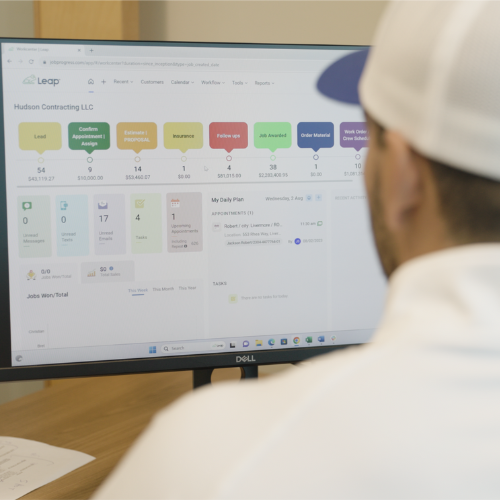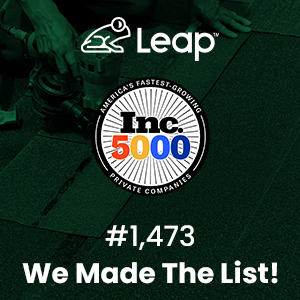Success often hinges on a company’s ability to connect with potential customers. Moreover, the speed at which you connect can have a massive impact on your sales. But what is speed to lead, and why does it matter in today’s market?
In this comprehensive guide, we will dive into the concept of speed to lead. Therefore, we’ll explore its significance, strategies for implementation, and the potential impact it can have on your business.
Understanding What is Speed to Lead
Speed to lead is a term that refers to the time it takes for a business to respond to a potential customer inquiry the moment they become a lead. Simply put, it’s the time between the moment a potential customer expresses interest in your services and the moment your business reaches out to them.
Typically, this is done through a phone call or email. And this time interval is crucial for success, as it can significantly impact your conversion rates and overall profitability.
For example, the significance of speed to lead includes:
- First Impressions Matter: Potential customers often reach out to multiple competitors simultaneously when they’re in need of services. The first to respond has a distinct advantage, as they leave a positive impression of promptness and professionalism. This initial impression can play a pivotal role in the customer’s decision-making process.
- Increased Conversion Rates: The likelihood of converting a lead into a paying customer decreases as time elapses. The faster you respond to a lead, the higher the chance of closing the deal. A prompt response shows your commitment to meeting the customer’s needs, which can make all the difference in a competitive market.
- Competitive Advantage: By prioritizing speed to lead, your business gains a competitive edge. When you consistently respond swiftly to inquiries, you position yourself as dependable and customer-oriented, which attracts more potential customers.
The value of being prompt is very clear. However, many companies struggle to understand the best ways to improve their speed to lead. And what is speed to lead without the right systems and processes in place?
Strategies for Implementing Speed to Lead
Now that we’ve established the importance of speed to lead, let’s explore some effective strategies for implementation:
1. CRM System
Invest in a robust lead management and CRM system that automates the process of capturing and distributing leads to your sales team. These systems can instantly notify your team of new leads and even automate initial responses. This automation ensures that no lead slips through the cracks due to delays in manual lead processing.
2. Availability
Potential customers seeking home improvement services might not always inquire during regular business hours. Ensure that you have a system in place to capture leads and respond to inquiries even outside of traditional working hours. Consider offering a chatbot on your website to provide immediate assistance and set up an after-hours phone line for inquiries.
3. Prioritize Hot Leads
Not all leads are created equal. Some potential customers are more serious and ready to make a decision quickly. Others may still be in the research phase. Train your sales team to identify hot leads and prioritize them for immediate follow-up. This ensures that the most promising opportunities are not lost due to slow response times.
4. Monitor Response Times
Consistently monitor your team’s response times to leads. Implement Key Performance Indicators (KPIs) to track how quickly leads are being addressed. Regularly review these metrics and establish benchmarks to motivate your team to respond faster.
5. Staff Training and Preparedness
Ensure that your sales and customer service teams are well-trained and prepared to handle inquiries effectively. Provide them with the necessary resources, scripts, and information to respond promptly and professionally to potential customers.
Ongoing training and skill development are essential to maintain a high level of responsiveness. It also provides potential customers with a more professional experience.

The Impact of Speed to Lead on Your Business
What is speed to lead going to impact at your business? In general, you will recognize its effects in many areas. Implementing a robust speed to lead strategy can have a profound impact on your business:
- Increased revenue
- Improved customer satisfaction
- Enhanced reputation
- Competitive edge
Faster response times lead to higher conversion rates. And, in turn, results in increased revenue. By closing deals more efficiently, your business can generate more income with the same number of leads.
Quick responses not only impress potential customers, but also lead to higher customer satisfaction. Satisfied customers are more likely to leave positive reviews, refer your services to others, and become repeat customers.
Consistently demonstrating speed to lead can help build a positive reputation for your business. Word-of-mouth recommendations and online reviews will reflect your company’s commitment to customer service excellence.
In a crowded marketplace, the ability to respond swiftly to potential customers sets you apart from the competition. Customers are more likely to choose a business they perceive as reliable and responsive, giving you a competitive edge.
By tracking response times and conversion rates, you gain valuable insights into your business’s performance. This data can inform strategic decisions and help you refine your speed to lead strategy over time.
Perfect Your Speed to Lead with Leap
While speed to lead is a powerful strategy for success, it comes with its fair share of challenges. That’s why many of the nation’s leading contractors are turning to the Leap platform.
Leap gives you a centralized management platform to intake every lead, automate communications, and nurture every relationship. In fact, Leap ensures that every lead you receive can be tracked and addressed in a timely manner.
Moreover, resource allocation and workload efficiency has never been easier. You can automate your workflow and eliminate unnecessary tasks that will save you time and money.
Maintaining a fast response time requires allocating resources to customer service and sales. And within Leap, you can create a seamless process to do just that.
In the home improvement industry, the concept of speed to lead is not merely a buzzword; it’s a game-changer. Responding promptly to potential customer inquiries can make the difference between success and failure in this competitive market.
According to a report by Xoombi, responding to a lead within one minute gives you a 391% improvement on conversation rate. A separate report by LeadSimple suggests calling within five minutes is 21x more effective than calling after 30 minutes!
So, what is speed to lead going to do for your business? Everything! And you can make the most of this impact with the power of the Leap platform. For more information, fill out the form below and schedule a quick demo!




